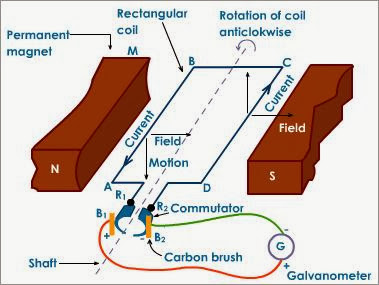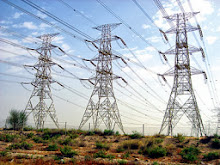Field Excitation in Dc generator
Field Excitation
The magnetic fields in DC generators are m
ost commonly provided by
electromagnets. A current must flow through the electromagnet conductors
to produce a magnetic field. In order for a DC generator to operate
properly, the magnetic field must always be in the same direction.
Therefore, the current through the field winding must be direct current.
This current is known
as the field excitation current and can be supplied to the field
winding in one of two ways. It can come from a separate DC source
external to the generator (e.g., a separately excited generator) or it
can come directly from the output of the generator, in which case it is
called a self-excited generator.
In a self-excited generator, the field winding is connected directly
to the generator output. The field may be connected in series with the
output, in parallel with the output, or a combination of the two.
Separate excitation requires an external source, such as a battery or
another DC source. It is generally more expensive than a self-excited
generator. Separately excited generators are, therefore, used only where
self-excitation is not satisfactory. They would be used in cases where
the generator must respond quickly to an external control source or
where the generated voltage must be varied over a wide range during
normal operations.
 |
| Dc generator |











0 comments:
Post a Comment